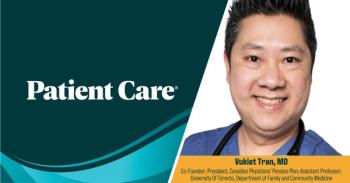
Steroid Abuse Found Among Preadolescents
SAINT-MAX, France -- Steroids and other performance-enhancing agents appear to be creeping into use by ever-younger populations -- even junior high students, researchers found.
SAINT-MAX, France, June 22 -- Steroids and other performance-enhancing agents appear to be creeping into use by ever-younger populations -- even junior high students, researchers found.
In a longitudinal study of students in eastern France, 1.2% of 11-year-olds and 3.0% of 15-year-olds reported using steroids, albuterol, or other agents to improve athletic prowess during the prior six months, according to a report in the British Journal of Sports Medicine.
Although most studies have focused on older teens and college students, "this result shows that doping does exist among very young athletes, whatever their level of sports participation, including leisure," wrote Patrick Laure, M.D., Ph.D. and Caroline Binsinger, Ph.D., both of Direction regionale de la Jeunesse et des Sports de Lorraine here.
The findings would likely be similar in the United States, commented Timothy E. Hewett, Ph.D., of the University of Cincinnati and director of the Sports Medicine Biodynamics Center at Cincinnati Children's Hospital Medical Center.
"Be aware that kids at younger ages, particularly those in junior high, are using doping agents at the level that high school students were a decade ago," he cautioned.
Because drug testing programs for student athletes typically begin at the high school level, "picking up steroid use in students that young is going to be up to the pediatrician or the family physician," he said. "They should be prepared to look for the same signs that you might look for in the college or high school athlete."
The prospective "Cohorte Myrtilles" study enrolled all 3,564 students entering their first year of secondary school in the Lorraine region of France in 2001 and followed them for four years.
The children completed anonymous questionnaires during class. They reported extracurricular sports participation, rated self-esteem and trait anxiety, and non-medical use of drugs included on the World Anti-Doping Agency "prohibited list."
Among them, 10.7% reported practicing with a sports group outside of school (average 3.5 to 5.2 hours a week, 69.5% team sports), 86.6% reported occasional extracurricular sports activity (2.5 to 3.2 hours a week, 32.9% team sports), and just 2.5% reported no sports practice outside of school.
Doping increased significantly over time in the cohort (P
However, few students reported adverse effects related to doping (4%). One became violent with a stimulant, one developed a "raucous" voice with albuterol, and two reported fainting with albuterol. None of them reported discussing the problem with anyone.
The reason for such a low adverse effect rate may have been, in part, the limitations of self-reporting, the authors acknowledge, with students failing to make a connection between the events and doping, or minimizing or denying the effects.
Even the medical literature has been unclear on side effects in this age group, though, Dr. Baron said.
"A lot of things we see in the adults or adolescents we may not see in the preadolescents because their physiology is different," he noted.
Altering the hormonal profile with anabolic steroids during puberty could have serious long-term side effects, such as stunting growth or causing sterility, Dr. Hewett said.
Factors that increased the likelihood of doping in the study included:
- Intention to use a doping drug (global odds ratio 6.9, 95% confidence interval 4.7 to 10.2).
- Use of other drugs including tobacco, alcohol, and recreational marijuana (OR 5.9, 7.3 and 10.9, respectively).
- Low self-esteem (average scores were significantly lower at most time points for users, P
However, stopping the trend "will probably not be easy," the researchers noted, because 44% of users attributed winning at least one sporting event to doping agents.
Ironically, "except for steroids, none of the supplements used have been convincingly shown to improve performance that much," Dr. Perriello said. "A lot of these things are being used with a false sense of benefit."
Newsletter
Enhance your clinical practice with the Patient Care newsletter, offering the latest evidence-based guidelines, diagnostic insights, and treatment strategies for primary care physicians.




